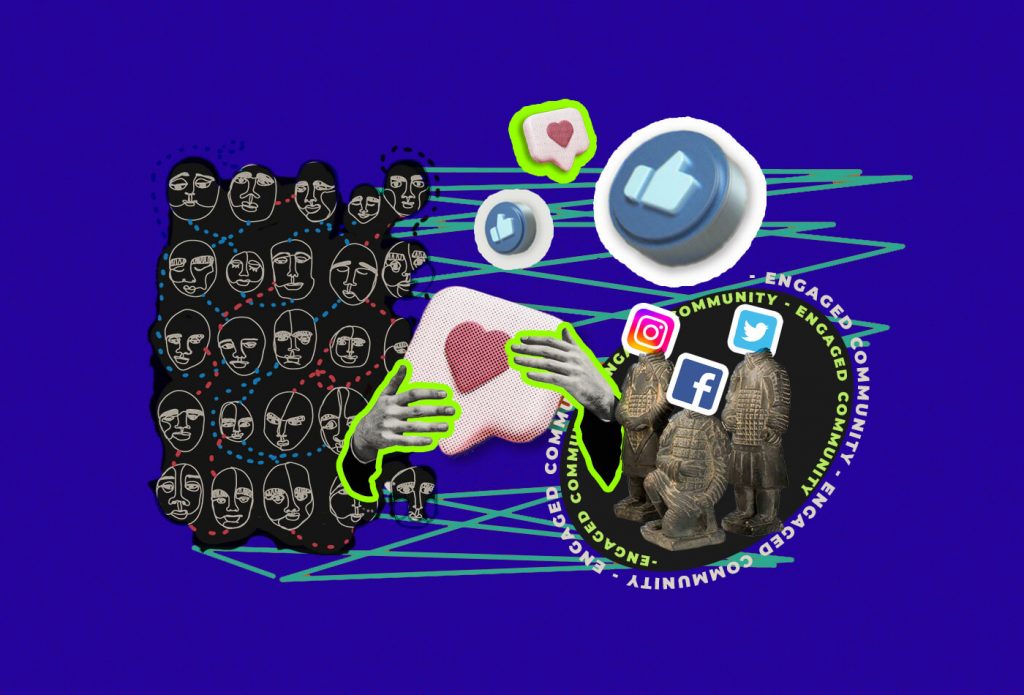In little more than a decade, the impact of social media has gone from being just another source of entertainment to a fully integrated part of nearly every aspect of daily life for individuals, businesses, brands, and even governments, to a point where it is now irreplaceable.
But, what is coming to social media THIS DECADE?
It is often tricky to predict the long run, especially for something as ever-changing and dynamic as social media. But if you are able to stay relevant to today’s trends and keep track of the latest buzz, you’ll start seeing the signs and have an idea as to where it is headed.
Social commerce is the hottest buzzing trend in social media marketing today and it looks to have an exponentially larger impact in the coming decade.
Read ahead to know what the buzz is about, around social commerce, how it works, and how you can leverage this to create a buzzworthy new channel to scale and further your brand or business. We at Buffalo Soldiers help brands build this leverage and nudge them in the direction social media is headed.
What exactly is Social Commerce?
In a nutshell, social commerce is the art of selling products directly within the social media platforms.
This is unlike social media marketing, where the ultimate goal might be to drive traffic from social media like Facebook, Instagram, or Twitter to your website or online store. Most of these purchase journeys have too many unnecessary steps in the conversion funnel. Each one massively increases the chance your potential customers are going to abandon their purchase and leave your store forever. With social commerce, these redirections are done away with, the entire process is streamlined and the store-the entire shopping experience happens without the customer ever leaving the social media site.
Social Commerce is expected to hit the $70-billion mark over the next 10 years.
Social commerce start-ups and new-age social media platforms such as Sharechat and TikTok, as well as social media giants such as Twitter, Snapchat, Facebook, and Instagram, have seen a huge increase in their user base with the signing up of first-time internet users, especially during times like these where entire countries are in lockdown.
Consumer behavior on Social Media
Talking about the recent trends in consumer behavior, we are already aware that people are spending a lot more time online owing to social distancing practice due to the ongoing pandemic. Hence, there is no denying that social media and mobile are gradually becoming the primary source of product discovery and consumption of content. And as people are getting more and more comfortable with this idea, there are many who find this more convenient and would continue doing so post the pandemic situation
Here are some sightings made based on the statistics of consumer behavior.
- The time devoured on mobile devices is anticipated to transcend the time people spend on television.
- Messenger sales on social media are successfully outperforming email marketing. It attains more clicks than ever.
- Almost 30% of the total online consumers say that they prefer buying things directly from social media platforms like Snapchat, Facebook, Linkedin, etc.
- Online stores are experiencing more referral traffic from social media. It has grown to more than 100% in the past two years. Isn’t this crazy? This is huge, and people are shifting their buying habits. This growth is much more than what is experienced by any other channel.
How does Social Commerce work?
The benefits of social commerce are numerous and outweigh social media marketing as it is a far more streamlined process, especially with the convenience that comes with chatbot checkouts and autofill payments and delivery details. There are far lesser taps and clicks when compared to traditional e-commerce through a web-store.
The math behind this streamlined efficiency goes like this:
- If you have a traditional website and store, let’s say you get 10,000 visitors to the site.
- Of that group, 25% give you their email address
- When you send that group an email, 25% of them open it.
- Than 5% of those who open the email click on the link in the email.
- And three percent of those clicks end up buying something.
- That’s a grand total of 1 purchase, after starting with 10,000 visitors.
Now, compare that to a hypothetical social commerce journey. Let’s take a messenger chatbot for instance.
- Start with 10,000 chatbot visitors.
- Of that group, you can message 99% of them
- Open rates are quite high for chatbots, around 75%.
- So from the group that sees your message and opens it, let’s say that 48% click-through
- And then 1% purchase something.
That’s a total of 35 purchases, compared to the one (1) purchase in the website example.
How Social Commerce differ from platform to platform?
We are already aware of the primary social media platforms, which include Facebook, Instagram, Pinterest, and Twitter. If you also spend some time on social media, then you must know that people have already started shopping on these platforms.
According to Facebook data, 70% of online shoppers say that they prefer to have a look at Instagram for product discovery. This might perhaps be the prime reason why the roadmap of Instagram has been delivering a secure shopping experience. Popular brands are also currently leveraging it. With the help of a new option Instagram Checkout, you can see a product that you like on Instagram and complete the entire purchase without redirecting anywhere else, making the entire process very convenient.
Facebook has already taken some major advancements towards social commerce with the help of Messenger and Facebook page shops. People like to go through the products listed on these and buy from there since it involves just a few steps to order a product.
There are powerful, varied traits for social commerce on Pinterest. New features keep evolving all the time. Ever since Pinterest released buyable pins in 2015, the platform has continued offering more and more eCommerce features.
Businesses can also create online stores on social media. This is precisely where we at Buffalo Soldiers come into the picture. We help you devise a digital strategy to enable your business to sell on your social media. We can get you started by creating custom shopping templates and offer continuous support to experience skyrocketed sales through social media. We help you leverage the existing capabilities and abilities of social platforms through social commerce.




